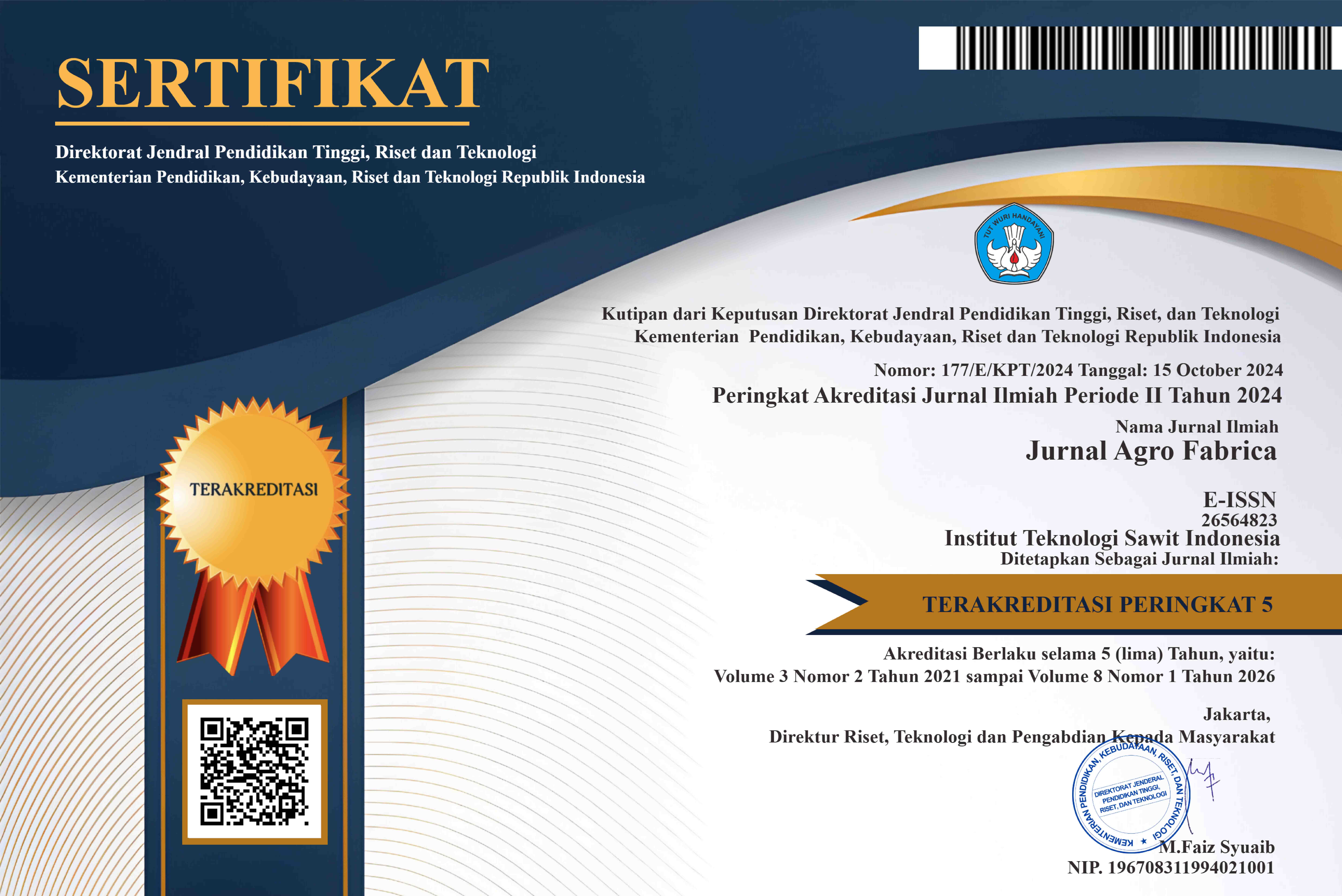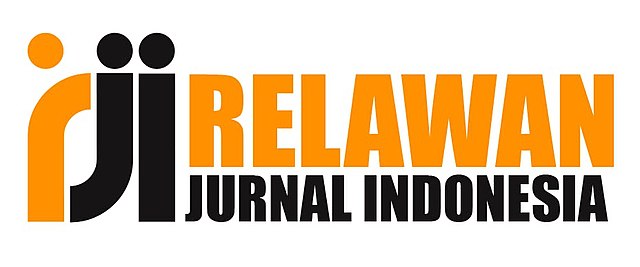PENGARUH PEMOTONGAN TANGKAI METODE “CANGKEM BUAYA” TERHADAP PENINGKATAN KUALITAS TANDAN BUAH SEGAR
DOI:
https://doi.org/10.47199/jaf.v1i2.135Keywords:
Fruit set, Fruit to Bunch, “Cangkem Buaya”, “Cangkem Kodok”Abstract
The low percentage fruit set will impact on the percentage of fruit to bunch and weight of Bunch. Fruit set is
low causing the formation of partenokarpi fruit/coat so that the harvest process is involved in loading, carrying
and processing. To solve the problem, the management of post-harvest Bunis is necessary. Comparing the "V"
(conventional) stem cutting, which is often referred to as the “Cangkem Kodok” (CK) as it is usually applied in
the plantation and the treatment of bunches (stalk) and base of bunches/stalks that have no fruit/ brondolan
called a “Cangkem Buaya" (CB). This research was conducted on oil palm plantation year 2015 planting in the
Plantation of Bah Birung Ulu PTP. Nusantara IV. Five Month research time, namely in February-June year
2019. This research uses a descriptive analysis method that is the primary data retrieval analyzed with Analysis
of Variance (ANOVA) and then conducted advanced test using the smallest real difference (BNT) at 5% as well
as correlation of several parameters Observation. The results showed that the weight of the stem garbage waste
with a higher CB treatment compared with CK treatment and with the treatment of CB can save the garbage
that does not fit, transport and sports per bunch in Afdeling 1 by 5.59%, Afdeling 2 8.02% and Afdeling 3
7.63%. With the treatment of stem cutting and base of the fruit bunching (Brondolan) or called the treatment of
crocodile hoe can increase the percentage of Fruit to a bunch average of 6%. The oil extraction were 27%.
Downloads
References
Abidin, Sulhan,M. Ashari, Sumeru. (2018). Analisis Potensi Produksi Tanaman Sawit (Elaeisguineensis) Dan Observasi Polinator Potensial Di Lingkungan Universitas Brawijaya. Hal 1451-1457. Jurnal Produksi Tanaman Vol 6 No 7
Harahap, I.Y Sumaryanto, W. Rizki, A.E. Prasetyo, R. Damanik, dan M. Arif. (2013). Buah landak kelapa sawit: ditinjau dari aspek ekofisiologi. Prosiding Pertemuan Teknis Kelapa Sawit 2013. Jakarta Convention Center, 7-9 Mei 2013.
Hutahuruk, C.H. & Sudahrto. (1984). Perkembangan populasi E. kamerunicus Fst di berbagai kebun kelapa sawit di indonesia. Buletin Puslit Marihat. 4 (1): 8-22.
Listia, E., I. Didik dan T. Eka. (2015). Pertumbuhan, Produktivitas dan Rendemen Minyak Kelapa Sawit di Dataran Tinggi. Jurnal Ilmu pertanian Vol 18 No 2. Universitas Gadja Mada, Yogyakarta.
Naibaho, P. (1998). Pengolahan Kelapa Sawit. PPKS Medan.
Prasetyo, A, E dan A. Susanto. (2012). Buah Landak pada Tanaman Muda Kelapa Sawit. Warta PPKS 13-21 (hal). Pusat Penelitian Kelapa Sawit.
Prasetyo, A, E dan Agus Susanto. (2012). Meningkatkan fruit set kelapa sawit dengan teknik hatch & carry Elaeidobius kamerunicus. Buku Seri Kelapa Sawit Populer 11. Pusat Penelitian Kelapa Sawit.
Rangkuti, I,U,P. (2018). Rendemen dan Komponen Minor Minyak Sawit Mentah Berdasarkan Tingkat Kematangan Buah pada Elevasi Tinggi. Hal 10-16. Jurnal Agroteknologi dan Ilmu Pertanian.
Susanto, A., R.Y. Purba, dan A.E Prasetyo. (2007). Elaeidobius kamerunicus. Seri Buku Saku 28. Pusat Penelitian Kelapa Sawit.
Sugiyono. (2014). Metode Penelitian Kombinasi. Jakarta
Downloads
Published
How to Cite
Issue
Section
License
Copyright (c) 2023 Jurnal Agro Fabrica

This work is licensed under a Creative Commons Attribution 4.0 International License.




















